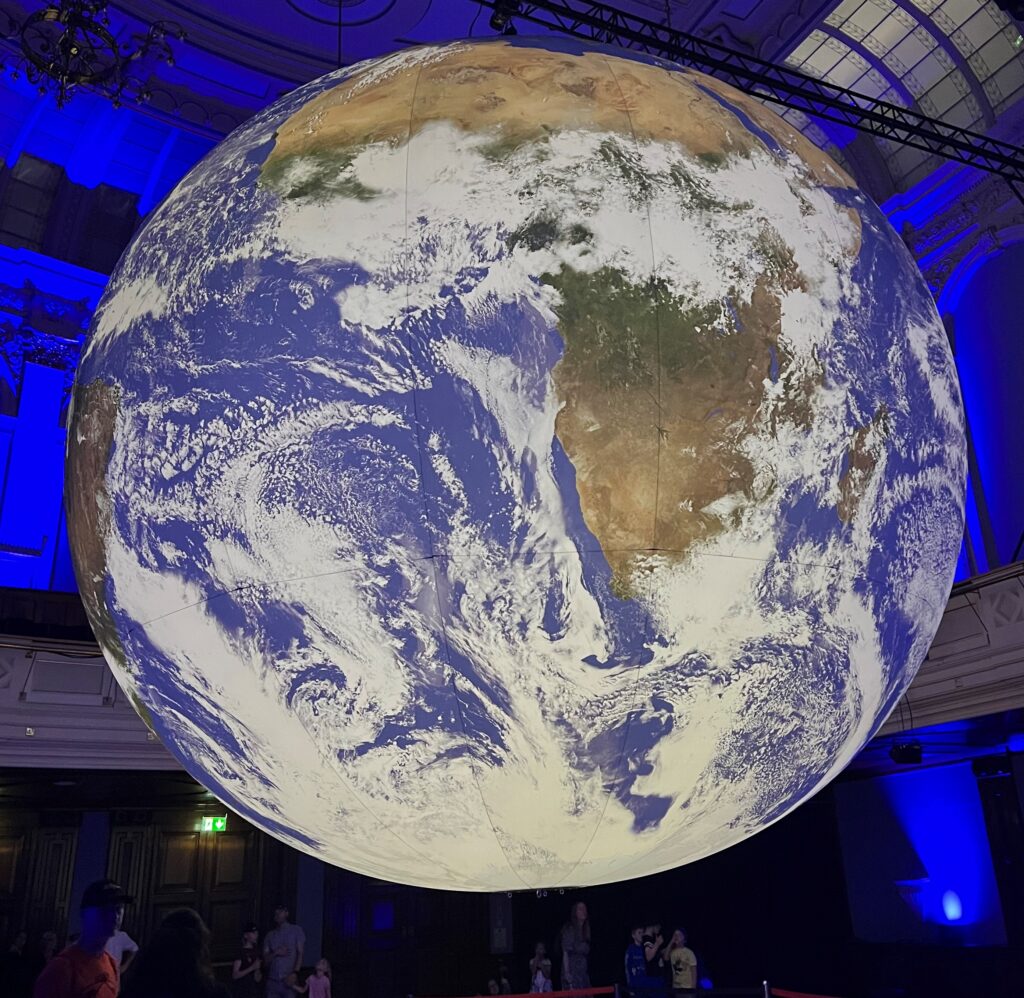I’ve long advocated that teams diverse in thought are critical to mitigate our own internal biases. What is equally important is how we challenge ourselves to apply the same rigour to things that we know or with which we agree, as to things that we are learning or with which we might disagree. I’ve had a couple of great examples recently on perspectives with maps that I’d like to share.
In June, I was fortunate enough to see a local installation of Luke Jerram’s amazing GAIA. Viewing our planet slowing turning in all its beauty was absolutely stunning. What resonated with me most as someone from the northern hemisphere, was not only how far North the UK is (we couldn’t actually see any further into Europe than the tip of Italy) but just how big the continents in the “South” actually are.

The 2D maps regularly put the UK at the centre and even on a globe we tend to focus on the places we know with the Southern hemisphere stuck to the base and barely looked at. As a child I never really thought about this, but it was nice to see the Earth from “below” and show my daughter a different perspective. While she knew the Earth was mostly water, seeing the size of the oceans and the scale of the countries really stunned her.
It got me thinking on the way home about how our views are so constrained by the mental pictures we have of our environment, even when we “know” the truth is different. In 2022, I was driving “North” (or up the country) in the UK at sunset, but the setting sun was just on the right hand side of the car, indicated that I was driving westwards. I know the UK is tilted, yet the regular visualisation of maps showing it straightened for weather forecasting made this a surprise – everything in my head was screaming I was driving North despite all the evidence to oppose this 😉
This week I saw a great video on YouTube by the always irreverent yet beautifully factual MapMen talking about this exact same thing – why do we always consider maps to point North. It’s well worth 10 minutes of your time.
Even from the thumbnail, looking at the UK upside down is eye opening. Things I hadn’t noticed before and a better concept of distances that my brain had just distorted because it was what I was used to seeing. It remind me of the altered faces where features have been inverted but it looks normal to us when viewed upside down.

Our brains often distort what we see to fit what we expect – this is one of our innate biases. We need to look at things from a different perspective to shatter some of our illusions and misconceptions. Surrounding yourself with people who think differently and have different life experiences can help with this, but it’s also important to take a step back and challenge yourself to alter your perspective as well as often as you can.